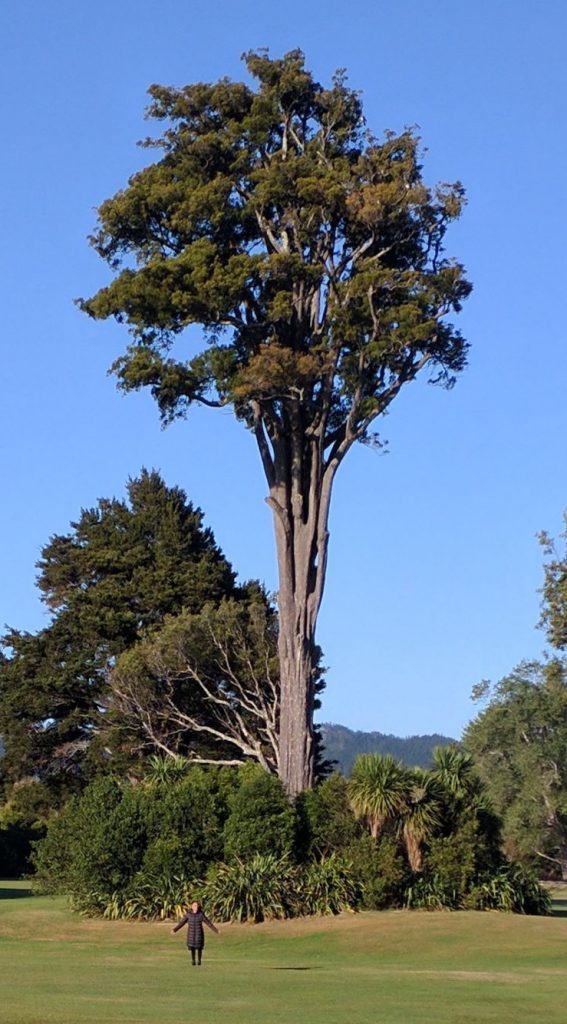
Pekaira Rei from Te Āti Awa calls teachers into the space at Barton’s Bush.
The karanga calls a group of Upper Hutt teachers across the grass to the base of the ancient kahikatea, a last remnant of a huge wetland forest, where a dozen kererū are busy high up in its crown. We hear Pekaira Rei, Te Āti Awa, acknowledge this whenua and the presence of the atua Māori, particularly Tāne Mahuta and his children.
Time out to be fully present in nature
This was the fitting start of a special day for eight teachers. Away from the busy responsibilities of the classroom, they could be fully present to experience the kinds of learning that will support nature connection for students and adults. It was also a valuable opportunity to hear from a mana whenua perspective what this connection to whenua and taiao means.

Beginning the adventure with Liana Stupples.
There is much research showing that regular opportunities to spend time in the natural world provide the foundation for understanding the environment and taking environmental action. Enviroschools Te Upoko o te Ika a Māui had seen the power of taking teachers into nature from working with Liana Stupples of Re-Wild Yourself in Kāpiti – experiential learning for teachers and the ways this can connect them to the local spaces provides an important key to them spending time in nature with their students.
Collaborating with an expert to see the simple things
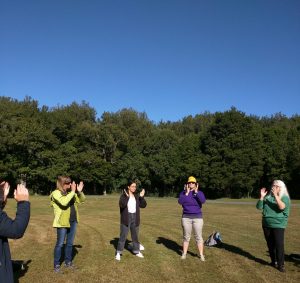
Warm up games for teachers.
In March 2021 we invited Liana to run a workshop with us at Trentham Memorial Park. Teachers played games, slowed down, listened, observed, touched, smelled, and noticed. Guided by Liana, and with the support of Michelle Ducat the Enviroschools Community Facilitator for Te Awakairangi ki Uta, they took time to reflect on these experiences and unpack the ways these activities worked to build strong memories and connections with place – and open up curiosity and wonder.
Being able to repeatedly return to a local place through all the seasons opens up new layers of sensory experience, noticing and wondering. This is the basis of curiosity, scientific inquiry and a commitment to care.
“If facts are the seeds that later produce knowledge and wisdom, then the emotions and the impressions of the senses are the fertile soil in which the seeds must grow” (Rachel Carson 1998, p. 56 The sense of wonder (1st ed.). New York, NY: HarperCollins.).

The welcoming home base, with banner by Ron Te Kawa.
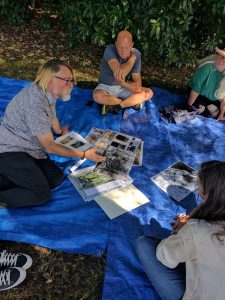
Reid Perkins from Upper Hutt City Library shares historic images of Trentham Memorial Park.
Extending our knowledge of human impacts
Reid Perkins from Upper Hutt City Libraries shared resources from the heritage collections that showed ways this area has changed over time, which added to the kōrero Pekaira shared about mana whenua histories.
This is another important thread in supporting action for the environment. By exploring how the land has changed over time and looking at how and why those changes were made, students can unpack the different values and knowledge that contributed to these changes. They can see that people have and can make changes – and consider their own values and agency.
Energised teachers full of ideas
The teachers came away energised and focused on how simple changes “these are child-friendly ideas that can easily be carried out” can make a big difference. One teacher pointed out that just having a kōrero outside can create opportunities to utilise the outdoor space. “Why don’t we do this already?”
“I will come back here (Barton’s bush) as I have before but with so many more lenses to create curiosity.” – teacher feedback
“It gave me a better appreciation of connection, of slowing down, take time to notice but also allow time to talk/share/reflect.” – teacher feedback

Birchville students learn in the outdoors rain or shine.
Taking the ideas back into the school day
Birchville School has made some changes to their regular routines to incorporate the outdoors and nature. Liana instilled in us that we can be outdoors in any weather if we are well prepared.
“We have moved to doing mindfulness outside whenever the weather allows it. We have switched to letting the kids still have learning through play outside if it’s raining as long as they’ve got gumboots and a rain jacket.” – Birchville School Teacher
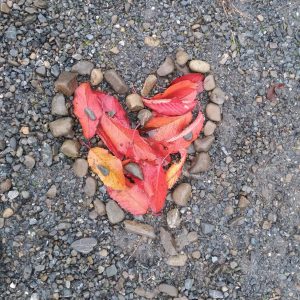
Environmental art
In May the school also used nature-based activities from the teacher professional development when they held their first whole school local exploration week: Mana ao tūroa – Exploring the world around you. The week included three groups of students alternating between activities. One group walked to the local dam, one that went down to the river, and another explored the nature of the kura.
“The kids got a lot out of it and we used a lot of the techniques you showed us like pekapeka ears [a game to use your ears like a pekapeka/bat to notice sounds].
I was so happy with the course and I’m really glad we’ve been able to bring so much of what we learnt into our kura. So thank you!” – Teacher, Isabelle Ayo von Thun
Fergusson Intermediate had a focus for the term of Turangawaewae, so their teacher, Sarah Balchin, was keen to put her learnings into practice. In May two classes spent a beautiful morning at Trentham Memorial Park. They discussed the history of the Māwai Hakona stream, which starts as a spring in the park, and experienced the mauri of Barton’s Bush, the last remnant of forest on the valley floor, and spent time with the children of Tāne, the birds and the trees.
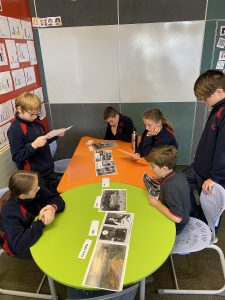
Fergusson Intermediate students decide where to place historical images of Trentham Memorial Park on a timeline.
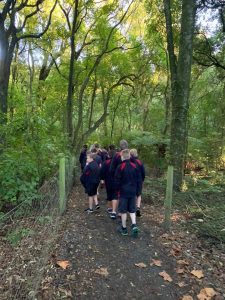
Fergusson Intermediate students experience Barton’s Bush.
Once back at school they looked at the images that Reid had shared, placing them on a timeline. “Such a good discussion!”
A parent shared their child’s incredulous response when they got home – “It was actually fun!”
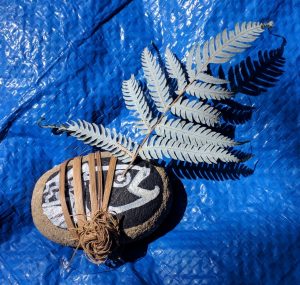
An artwork created to explore story telling in nature.
